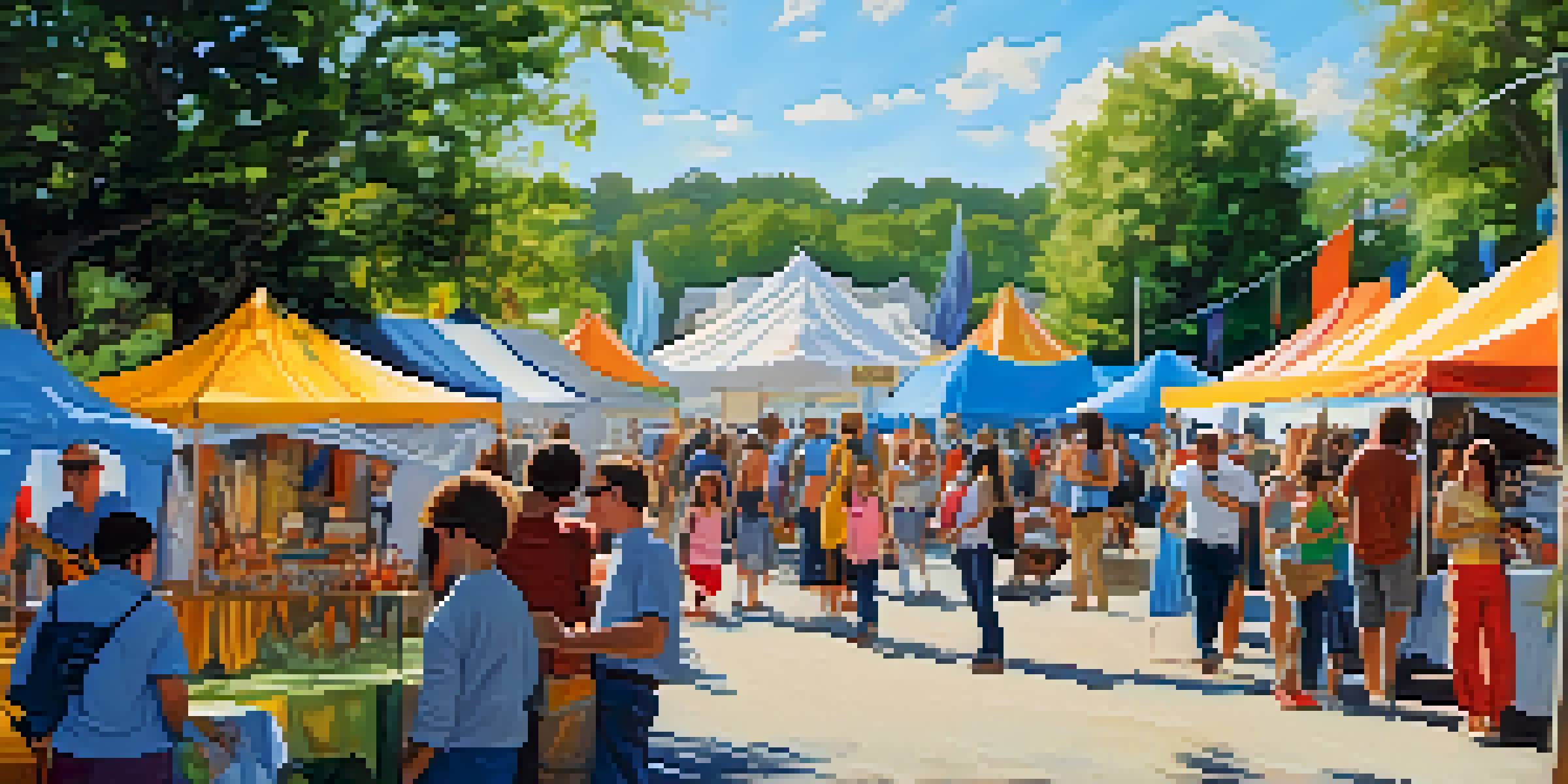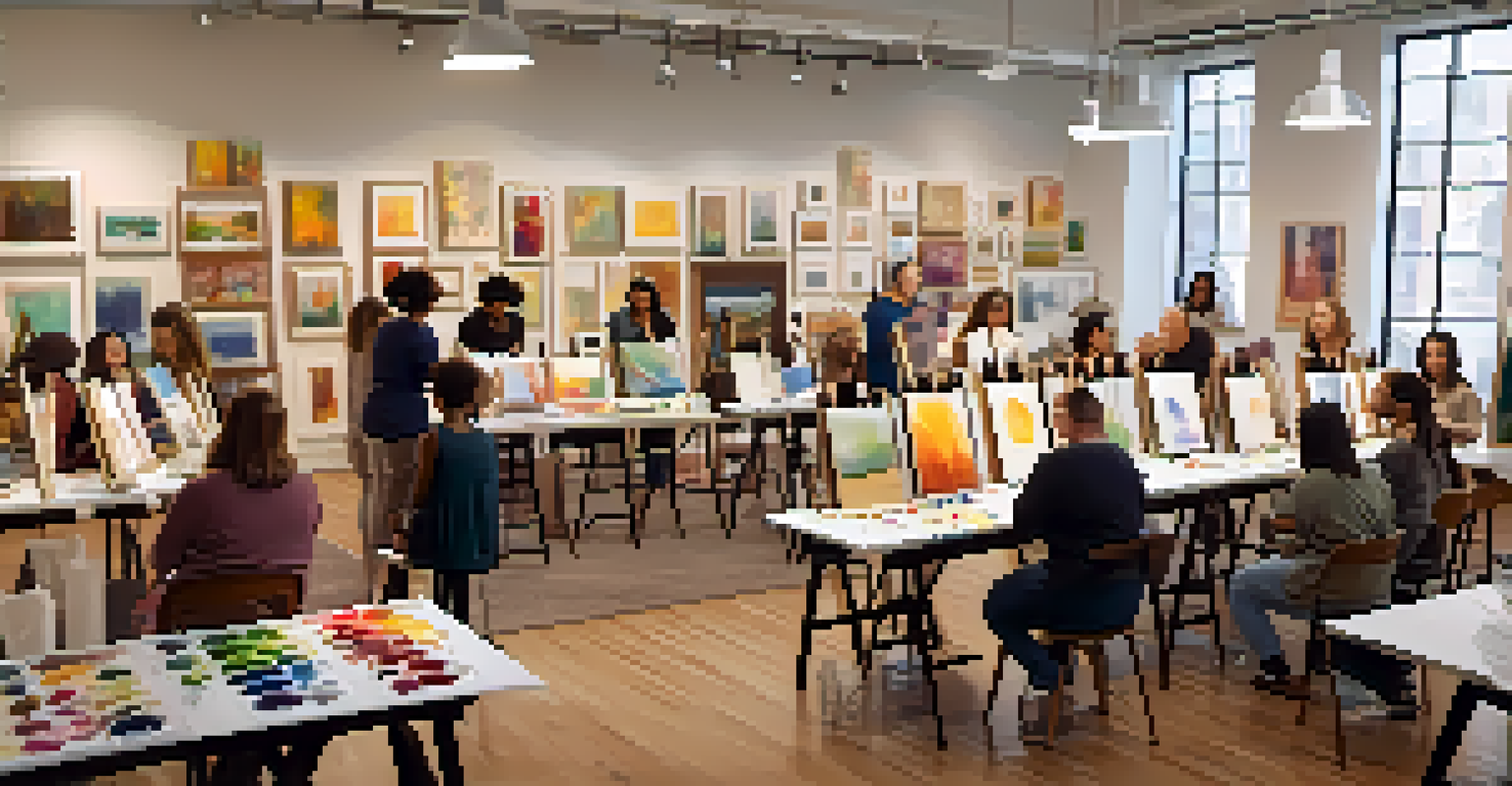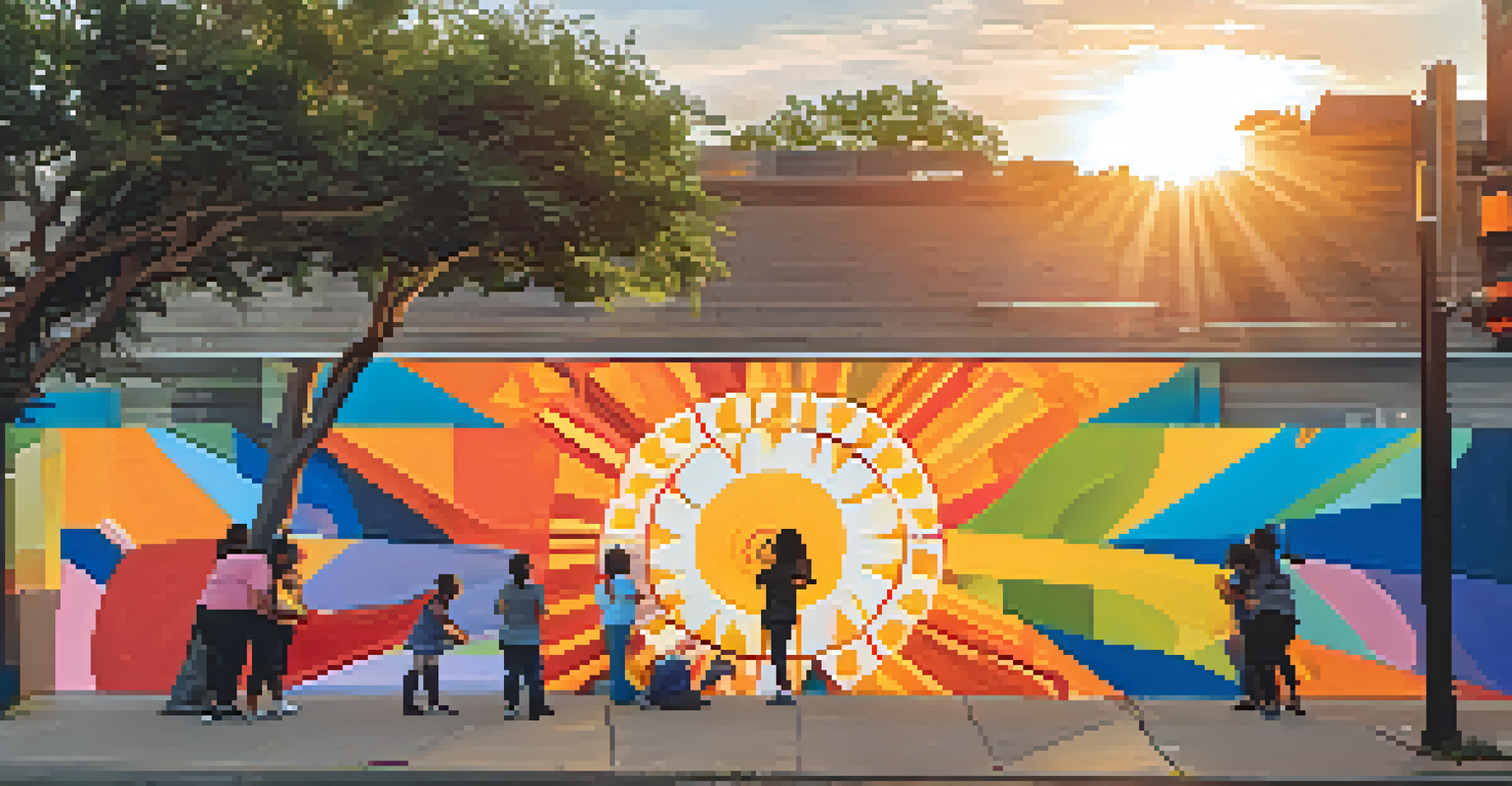Nonprofit Organizations and Arts Funding in Georgia

Understanding the Role of Nonprofit Organizations in Arts
Nonprofit organizations are crucial players in the arts sector, providing not only funding but also resources and support for artists and cultural institutions. They often serve as a bridge, connecting communities to the arts and ensuring accessibility. In Georgia, these nonprofits range from small community theaters to larger organizations dedicated to visual arts and music.
The arts are not a luxury; they are a necessity for the human spirit.
By cultivating local talent and promoting cultural heritage, nonprofits help sustain the rich artistic landscape of Georgia. They offer platforms for emerging artists while also preserving traditional art forms. This dual focus allows for a vibrant mix of creativity and cultural expression.
Moreover, nonprofits often collaborate with schools and community centers, fostering a love for the arts among younger generations. This engagement is essential, as it not only nurtures future artists but also instills a sense of appreciation for the arts within the community.
Current Arts Funding Landscape in Georgia
The arts funding landscape in Georgia has evolved significantly over the years, shaped by both government initiatives and private donations. Local and state government grants play a vital role in supporting nonprofits, with the Georgia Council for the Arts being a key contributor. Their funding not only helps sustain existing programs but also encourages innovative projects that might not secure traditional funding.

In addition to government support, private donations and corporate sponsorships are crucial to the sustainability of arts organizations. Many local businesses understand the value of the arts in enhancing community identity and tourism, leading them to invest in local projects. This symbiotic relationship strengthens the arts ecosystem in Georgia.
Nonprofits Enhance Arts Accessibility
Nonprofit organizations play a vital role in making the arts more accessible to diverse communities in Georgia.
However, challenges remain, particularly in securing consistent funding year after year. Nonprofits often find themselves in a competitive space where securing grants and donations can be a daunting task, necessitating creative approaches to fundraising and community engagement.
Impact of Nonprofits on Local Communities
Nonprofit organizations have a profound impact on local communities, acting as hubs for cultural engagement and education. They often provide free or low-cost access to arts programs, making the arts more accessible to diverse audiences. This commitment to inclusion helps foster a sense of belonging among community members.
Art is the most beautiful of all lies.
Additionally, nonprofits contribute to local economies through job creation and tourism. Arts events, festivals, and exhibitions not only attract visitors but also stimulate local businesses, from restaurants to hotels. This economic boost underscores the importance of arts funding as a means to strengthen community ties.
Moreover, community-based arts initiatives can address social issues, promoting dialogue and understanding among different groups. By bringing together individuals from varied backgrounds, nonprofits play a critical role in enhancing social cohesion through artistic expression.
Challenges Faced by Nonprofit Arts Organizations
While nonprofit arts organizations play a vital role, they face numerous challenges that can hinder their effectiveness. One significant issue is the reliance on a limited pool of funding sources, which can lead to financial instability. Economic downturns or shifts in donor priorities can severely impact their ability to deliver programs.
Additionally, these organizations often operate with lean staff and resources, making it difficult to manage multiple projects and outreach efforts. This lack of capacity can limit their reach and impact, especially in underserved communities where arts programming is most needed. Without sufficient manpower, the potential for growth and innovation is stifled.
Funding Challenges Persist for Arts
Many nonprofit arts organizations face ongoing challenges in securing consistent funding, which impacts their ability to deliver programs.
Finally, the ongoing challenge of raising awareness about the importance of arts funding remains. Nonprofits must constantly advocate for support, demonstrating the value of the arts in education, community building, and economic development. This advocacy is essential to ensure that the arts continue to thrive in Georgia.
Successful Nonprofit Arts Initiatives in Georgia
Georgia is home to several successful nonprofit arts initiatives that exemplify the positive impact of arts funding. Organizations like the Woodruff Arts Center in Atlanta have created a vibrant cultural hub, offering diverse programming that attracts thousands of visitors each year. Their success illustrates the importance of strategic partnerships and community involvement.
Another notable example is the Savannah College of Art and Design (SCAD), which not only provides education but also engages the community through art exhibitions and festivals. Their commitment to showcasing local talent fosters a sense of pride and encourages artistic exploration among residents.
Moreover, smaller organizations like the Atlanta Ballet and the Georgia Ensemble Theatre demonstrate how focused missions can lead to significant community impact. By addressing local needs and highlighting unique cultural narratives, these nonprofits contribute to a rich tapestry of artistic expression across the state.
The Future of Arts Funding in Georgia
The future of arts funding in Georgia holds both promise and uncertainty. As communities increasingly recognize the value of the arts, there is potential for expanded funding opportunities through innovative partnerships and new revenue streams. Crowdfunding, for instance, is becoming a popular way for artists and nonprofits to engage directly with supporters.
However, it will be crucial for nonprofits to adapt to changing economic landscapes and donor expectations. Emphasizing transparency, community impact, and strategic planning can help organizations secure necessary funding and support. Building strong relationships with stakeholders will be key to navigating these changes.
Community Support Fuels Arts Growth
Engaging with local arts events and advocating for the arts can significantly bolster support for nonprofit organizations in Georgia.
Ultimately, the success of arts funding in Georgia will depend on collective efforts from nonprofits, government bodies, and the community. By working together, they can create a sustainable environment where the arts continue to flourish and enrich the lives of all Georgians.
How to Support Nonprofit Arts Organizations in Georgia
Supporting nonprofit arts organizations in Georgia can take many forms, and every little bit helps. One of the simplest ways is through donations, whether monetary or in-kind contributions. Many nonprofits appreciate support in the form of art supplies, event space, or volunteer hours, which can significantly impact their operations.
Attending local arts events, such as performances, exhibitions, and festivals, is another fantastic way to show support. Not only do these events showcase local talent, but they also help raise funds and awareness for the organizations behind them. Plus, it’s a great way to engage with your community and meet fellow art enthusiasts.

Lastly, advocating for the arts on social media or within your local government can amplify the voices of these nonprofits. By sharing their initiatives and highlighting their importance, you can help create a culture of support that encourages more funding and engagement within the arts community.